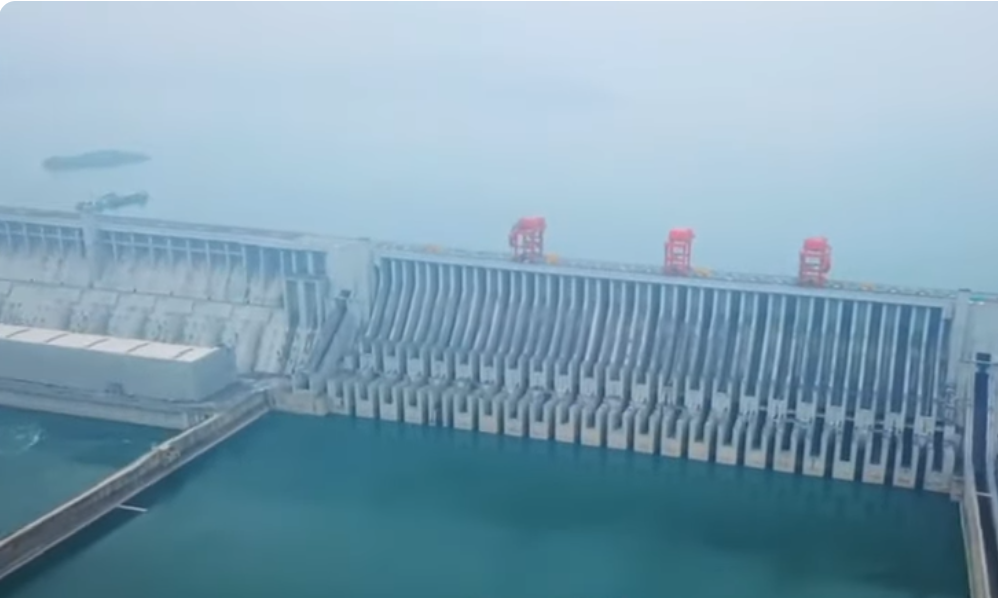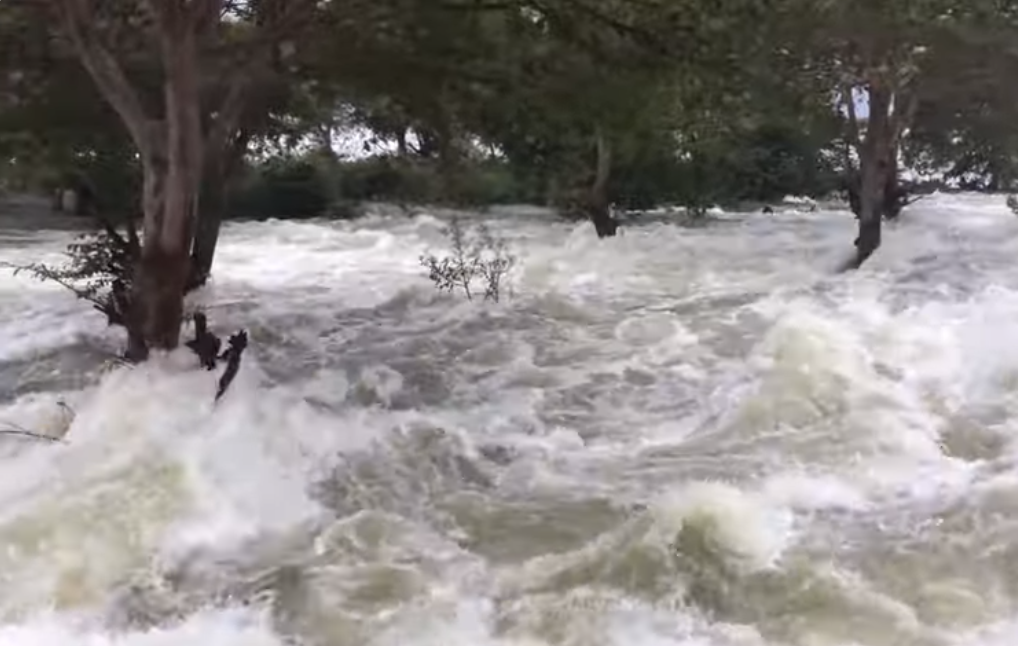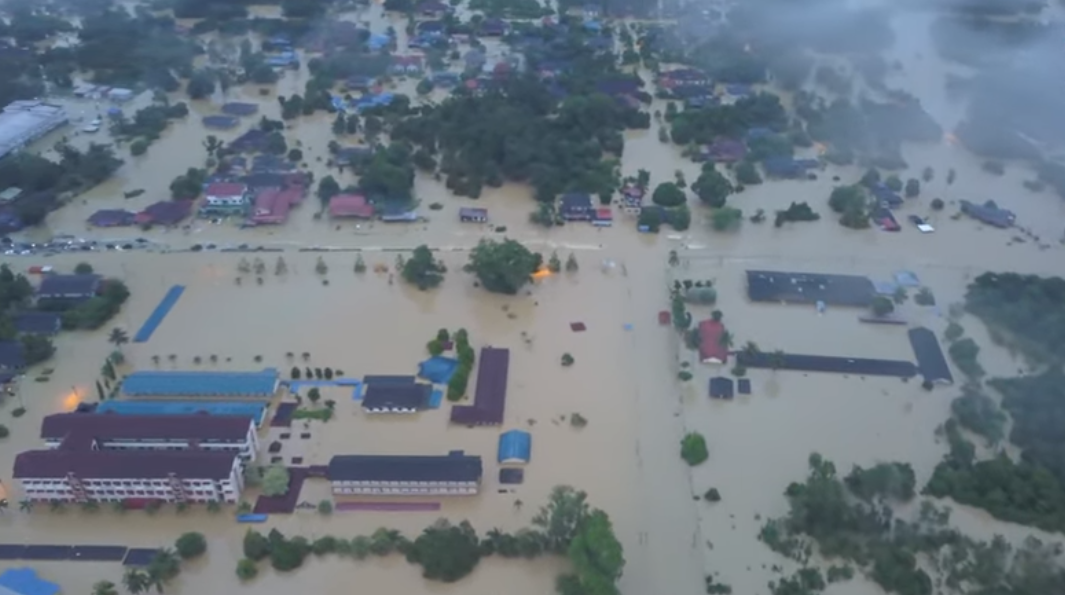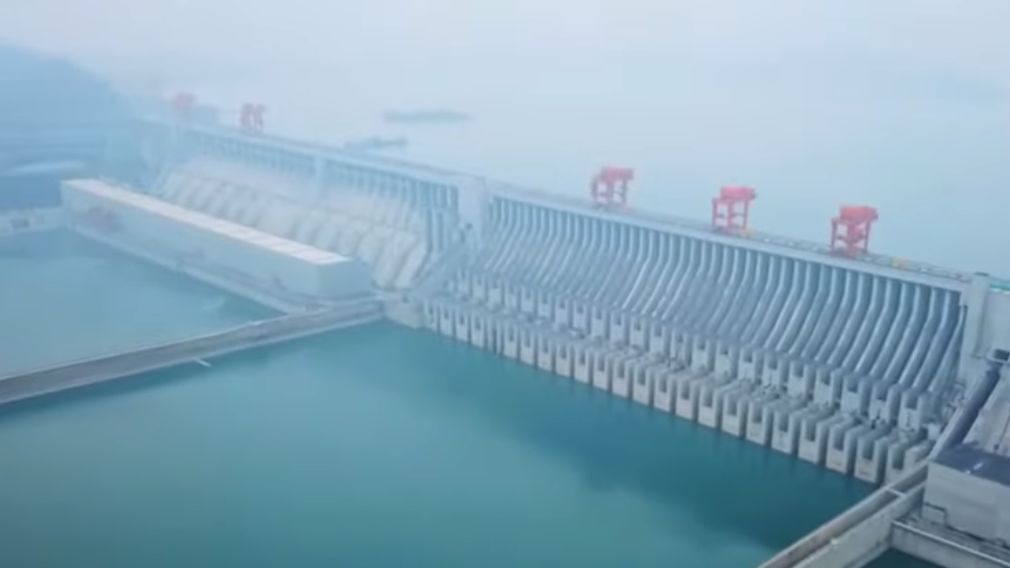The Three Gorges Dam is of gigantic size, blocking the Yangtze River, the third longest river on the planet. Construction began in 1994 and it was fully operational from July 2012. The Three Gorges Dam still holds the title of the largest hydroelectric dam in the world, with a length of 2.3 km and a height of 185 m. The reservoir created by the dam has a surface area of over 1,000 km2.

To complete the project, 40,000 workers worked tirelessly for 12 years at a cost of tens of billions of dollars. The government and many people in China are very proud of this massive concrete structure. They praise it as a masterpiece of civil engineering, a symbol of renewable energy with 34 power plants, each weighing 6,000 tons, producing a total electricity output of 22,500 MW, sufficient to ensure energy for tens of millions of Chinese people. However, despite being a project that represents China's national pride, the Three Gorges Dam conceals terrifying mysteries, some of which the Beijing government does not want to disclose widely to avoid controversy.
First is the fact that the Three Gorges Dam was not supported from the very early days of its conception.
To build the Three Gorges Dam, Chinese authorities had to relocate 1.3 million people and destroy many historical archaeological sites, with about 100 workers losing their lives during the construction of the dam. The Three Gorges Dam also poses environmental hazards; no one can be sure about the long-term impacts of this superstructure, but the number of fish species has declined and pollution has increased because the self-cleaning nature of the river has been neutralized by the dam. The pressure on the area where the reservoir is created can cause landslides; in fact, another hydroelectric dam in the area has collapsed due to landslides. Not to mention that the reservoir is located on two different fault lines, which is believed to increase seismic activity.
Additionally, sediment layers are accumulating behind the dam instead of flowing downstream to nourish crops and wildlife. Although engineers have designed some sediment flows through the dam, it is estimated that 30 to 60% of the sediment is still retained behind the dam, and this situation is the culprit causing all ecological problems. But perhaps the most catastrophic potential risk lies in the possibility of the dam breaking at some point due to seismic activity or the weakening of the dam itself. If this occurs, it would cause flooding on an unprecedented scale; the current heavy rainfall with five waves since early June has caused widespread flooding affecting at least 13 million people in 26 provinces and municipalities in China.

Once again, the safety of the Three Gorges Dam has become a hot topic of debate, with many expressing concerns about the risk of the dam cracking when the water level in the reservoir exceeds warning levels. However, Chinese media quoted some experts asserting that the giant dam is designed to withstand much greater pressures. This week, the Chinese government announced that it has released water from the spillway for the first time this year; such reassuring statements do not dispel the worries of the outside world about the lives and safety of approximately 600 million people living along the banks of the Yangtze River if the dam were to break. The catastrophic scenario, if it occurs, would create a terrifying wave that could wipe out the entire lower Yangtze River region, as the energy from the flowing pressure is immense, which would also plunge China into a power shortage, economic collapse, and disease outbreaks.
Understanding the history
The idea of founding the Three Gorges Dam was proposed by Sun Yat-sen, who first considered the plan to build the largest dam on the Yangtze River in 1919, not only for electricity generation but also to help control flooding on the Yangtze River, demonstrating China's new strength. However, this idea was shelved due to unfavorable political and economic circumstances, and because of too many issues, the construction project of the Three Gorges Dam was delayed for nearly 40 years.
It wasn't until 1992 that Chinese Premier Li Peng managed to persuade the National People's Congress to approve the project, but nearly one-third of the representatives opposed or abstained from voting, which is rare in Chinese politics throughout the construction process. The Three Gorges Dam has been embroiled in numerous scandals regarding skyrocketing costs, political corruption, and resettlement issues, causing project delays and sometimes halts. The Three Gorges Dam is actually referred to by international river organizations as a model of disaster; the World Bank also refused to fund the project due to concerns about environmental impacts and many other factors. The Three Gorges Dam is approximately 2.3 km long and 185 m high, five times larger than the Hoover Dam in the United States.
To build the dam, about 27.2 million cubic meters of concrete were used, mainly for the dam body, 463,000 tons of steel, enough to build 63 Eiffel Towers, and 102.6 million cubic meters of earth were excavated. Experts also had to use about 200 tons of explosives to destroy the water barrier of the Three Gorges, ultimately creating a temporary structure for workers to complete the massive main wall of the Three Gorges Dam. This explosion generated about 186,000 cubic meters of rubble, and the cost of building the dam was enormous; official reports indicate that the construction budget for the Three Gorges Dam was around 25 billion USD. However, observers believe that the actual cost could be much higher than the announced figure, estimated to be around 75 billion USD, not including corruption, losses in agricultural land destruction, resettlement, and environmental losses.
In the context of increasingly severe flooding as seen today, many people suspect that the floods are a result of the world's largest dam secretly releasing water to relieve pressure on the dam structure, ultimately causing the people to bear the heavy consequences. One of the biggest controversies surrounding the Three Gorges Dam is the extent of the damage it causes to the environment, with estimates that 70% of freshwater in China is polluted, and the toxins could worsen the situation significantly. The Three Gorges Dam is situated above old wastewater treatment facilities and mining sites, not to mention that 1 billion liters of raw wastewater settle in the bed of the Yangtze River every year.
The secret behind the Three Gorges Dam slowing down the Earth's rotation is due to a phenomenon called the moment of inertia.

After the project was completed, when the water level was at its highest, the total area of land submerged was 632 km2, with the reservoir having a capacity of about 39.3 km2 and the water volume reaching up to 42 billion tons. The displacement of such a large volume of water will affect the Earth's rotation due to the moment of inertia, where the inertia of a rotating solid object corresponds to its rotational motion. Raising 42 billion tons of water to a height of 175 m above sea level will increase the Earth's moment of inertia, thereby slowing down the planet's rotation.
NASA scientists have noted that the displacement of such a large volume of water will extend the day by 0.06 seconds, causing the Earth to become slightly rounder in the middle and flatter at the poles, and also shifting the poles by about 2 cm. The area surrounding the Three Gorges Dam is home to 6,400 plant species, 3,400 insect species, 300 fish species, and over 500 species of terrestrial vertebrates. The dam not only affects these species but also their habitats; reservoir erosion has caused landslides and even threatens one of the largest fishing industries in the world.
The dam is so large that it creates a microclimate that threatens the region's ecology.
The Three Gorges Dam is controversial in China not only because of environmental damage issues but also due to structural flaws since it was first proposed for construction. Mr. Wang Wu, a hydrology expert, boldly warned that the Three Gorges Dam is actually not as stable as people think and could break at any time. Mr. Wang believes that the biggest concern is the cracks and the poor quality of concrete discovered during the construction process. Similarly, engineers exploiting mineral resources in Sichuan have written extensively about the dam's issues.

In 2004, he addressed the issues of landslides and earthquakes caused by the reservoir; in 2016, Mr. Wang wrote an article questioning the actual capability of the Three Gorges Dam in flood mitigation. In the summer of 2019, satellite images recorded that the body of the Three Gorges Dam appeared to be sinking due to water pressure, and the fear of a dam break loomed, threatening millions of lives near the area. Currently, as heavy rainfall and flooding ravage 26 provinces in southern and central China, warnings about the risk of the Three Gorges Dam collapsing due to increased water pressure endangering millions of people living nearby have once again emerged, despite officials in Beijing repeatedly asserting that the Three Gorges Dam remains safe.
An iconic structure but also shrouded in controversy, much like the lavish palaces of ancient Chinese emperors, it once drained the national treasury, causing many to fall into hardship during its construction. However, these palaces and temples later became part of the heritage of the Chinese people, a historical witness and a source of pride for future generations. Everything has two sides, just like the Three Gorges Dam, and humanity must accept both the good and the limitations.
